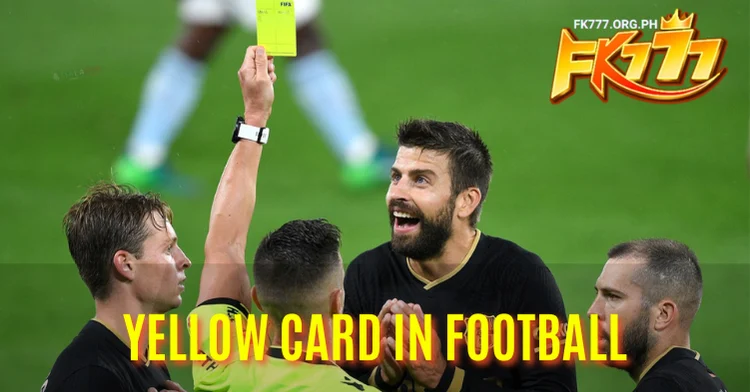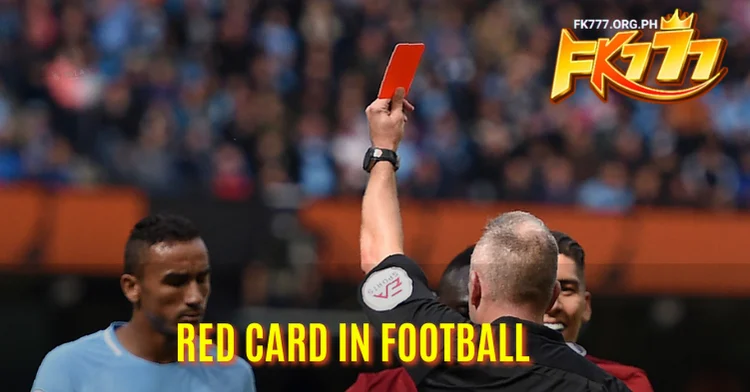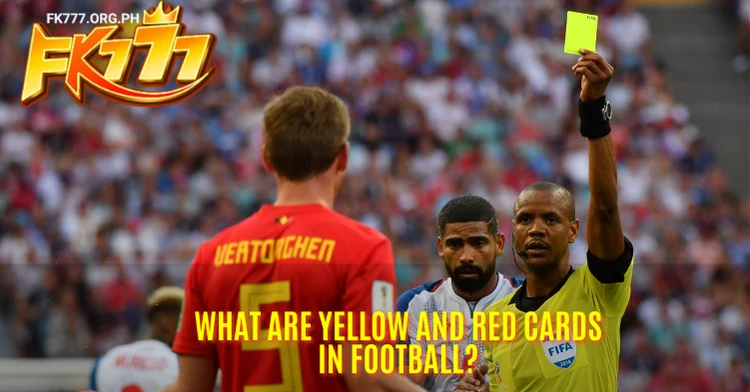Yellow and red cards in football are given to players by the referee when players break the rules of the gam. This article by FK777 will delve into the regulations surrounding yellow and red cards in Football, helping readers understand their significance and comply with the rules.
What Are Yellow and Red Cards in Football?
Yellow and red cards appeared for the first time during the 1970 FIFA World Cup. These penalties are common in football and are given by referees upon players’ fouls.
What Is a Yellow Card in Football?
A yellow card is given by the referee to the player for some offense committed on the field and for violation of Law 12 of the Laws of the Game. In all normal cases, an infringement by one team member will have the opposing team be awarded with a direct free kick or even a penalty kick.
A player who receives two yellow cards in one match has received the equivalent of a red card, this is called an indirect red card. The player is sent off, and his team must continue without them, not being allowed to substitute another player for them.

What Is a Red Card in Football?
The most severe punishment dealt out in the course of the match against any footballer or player belonging to either of the playing teams for very serious violation: A red card is shown. Two methods occur during the allotment of the red card to anyone.
- Direct Red Card: A card straight away given by the referee to any player for a serious foul in the field. This includes actions that seriously break the spirit of the game or endanger the health and safety of other players.
- Indirect Red Card: When a player or coaching staff is given two yellow cards in one game, this is called an indirect red card. Here, players are fewer affected by direct red card cases than indirect ones.
The Significance of Yellow and Red Cards in Football
Yellow and red cards are forms of reprimand or warning for the commission of certain fouls by the players in the course of the match.
The Significance of a Yellow Card in Football
Yellow cards have several important implications and are used as a punitive measure when players breach the game’s rules. Key purposes include:
- Yellow card: warning to stop violations: A yellow card has a great role in warning the player not to continue his inappropriate actions like fouling many times, dissent against the referee’s decisions, threatening opponents.
- The Immediate Penalty Decision is mostly followed with a yellow card to the team, such as a direct free kick or penalty kick to the opponent team; hence, decisions depend on the gravity and placement of the foul.
- Cumulative Effect: A player who receives in the same match two yellow cards is shown a red card; such a player will be expelled and will not be allowed to continue with the right to play.
- Yellow cards also establish order and respect in the ongoing game. Yellow cards protect the players’ safety and let the game continue with the rules that have been established.

These punishments, issued in the form of yellow cards, help to reinforce good sportsmanship and honor within the game so that football may still be considered the “beautiful game.”
The Significance of Red Cards in Football
Red cards in football are a serious disciplinary measure implemented to maintain order, respect, and safety during a match. Their significance includes the following:
- Expulsion from the field: It means a player has to be immediately expelled from the field by the referee. The player will forfeit his right of continuing in the play, and their team has to play with one player fewer than their opponent team.
- Serious fouls include red card issuance on account of grave fouls or a breach of decent conduct during play, as by unseemly behavior, danger to others, or threat to players opposing them.

- Impact on Match Outcomes: When a player receives a red card and is expelled, it can significantly influence the match outcome. Playing with one fewer player increases the opposing team’s chances of victory.
- Long-Term Consequences: Beyond being removed from the current match, players with red cards often face long-term penalties, such as suspension from subsequent matches. How many matches does a red card ban a player? For severe fouls, players may be suspended for up to three matches.
- Ensuring Player Safety: Red cards help ensure the safety of players on the field by eliminating dangerous actions that threaten the well-being of others.
How Are Yellow and Red Cards Calculated?
Current rules provide clear guidelines for offenses resulting in yellow or red cards as follows:
Yellow Card Offenses
Players may receive a yellow card for the following actions:
- Unsportsmanlike behavior during play.
- Using language or gestures to dissent against the referee’s decisions.
- Repeatedly violating game rules.
- Delaying or wasting time to stall the match.
- Failing to maintain proper distance during set pieces, such as free kicks.
- Entering or leaving the field without the referee’s permission.
- Removing their shirt while being substituted, as long as their feet remain within the boundary of the pitch.
Red Card Offenses
A player will receive a red card for committing the following violations:
- The following violations will show a player a red card:
- For receiving two yellow cards in the same match.
- Intentional use of excessive force likely to injure an opponent.
- Using violence against one’s teammates, referees, or even spectators on the field.
- Spitting at anyone on the field.
- By holding or hitting the ball with any part of their hand in order to impede or obstruct the flow of the ball to deny an otherwise obvious goal. Even the goalkeepers get a red card in cases of severe penalty area infringements and handling of the ball outside the 16.5 meters.
- Using foul, abusive, insulting, or offensive language or gestures.
Conclusion Yellow And Red Cards in Football
The information above provides a detailed understanding of yellow and red cards in football. FK777 hopes this article helps readers grasp the significance of these two types of penalties, enabling players to avoid violations during matches.
Read more:
- What is a Neutral Venue? Reasons for Holding Matches on Neutral Ground
How Many Rounds Are in Serie A? Features of Serie A You Should Know
Hello, I’m Miguel Santos , the CEO here at FK777 Casino . Having acquired years of experience in online gaming , I have always believed in creating a platform for players that is superior and safe for gameplay . My mission is to combine innovation with integrity , ensuring FK777 stands out as a trusted and enjoyable destination for gaming enthusiasts .


